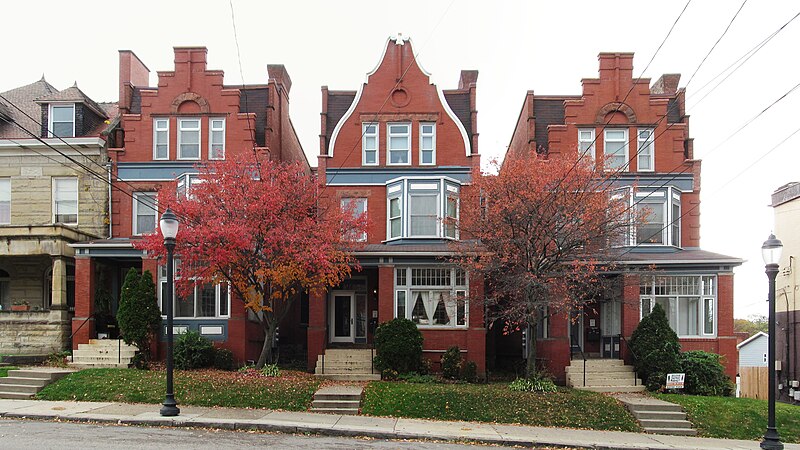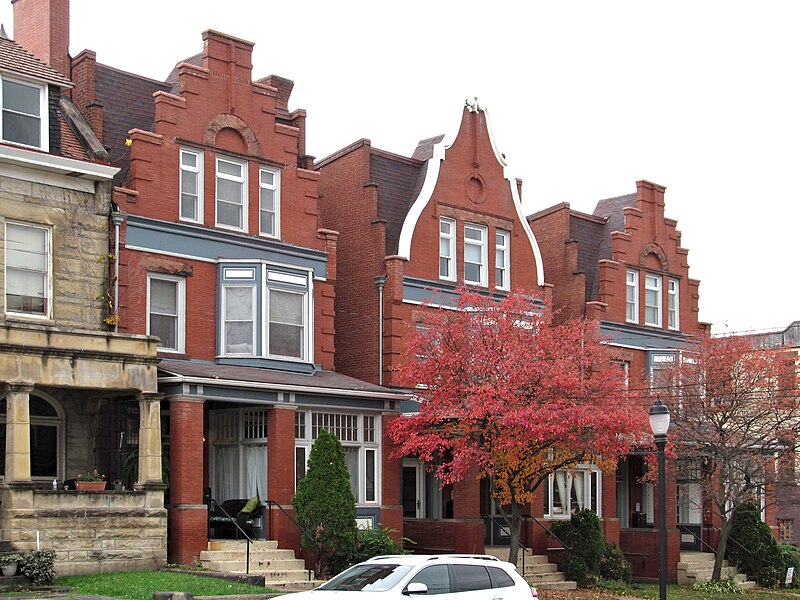
-
Entrance to the Union Trust Building
-
Third Avenue Front of the Times Building
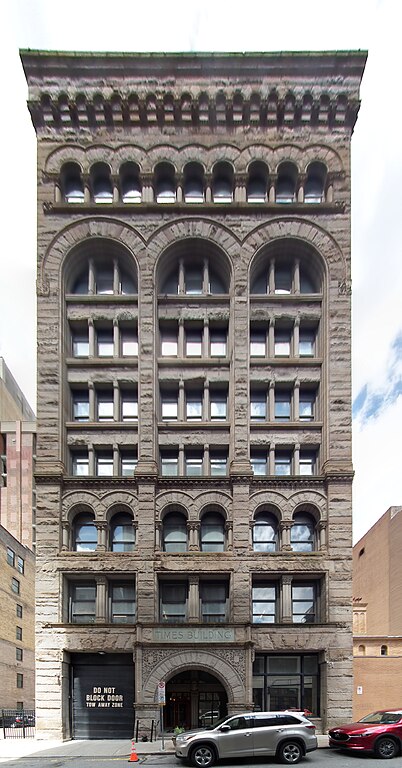
The Times Building, designed by Frederick Osterling in his Richardsonian Romanesque period, is a block deep, so it has fronts on both Fourth Avenue and Third Avenue. The Fourth Avenue front is narrower; the Third Avenue front has one more bay, and a single grand arch in the middle. The decorative carving is probably by Achille Giammartini, who is known to have worked with Osterling on the Marine Bank and the Bell Telephone Building, and all his trademark whimsy is on display here.





Fujifilm FinePix HS10. -
Daub Building

Thanks to the research of an architect correspondent, we can say with fair confidence that this neglected building on Smithfield Street was designed by Frederick Osterling, one of the titans of Pittsburgh architecture. It was built in about 1898 for John Daub, whose name in big letters stares down at us from above the fifth floor.1

This building has suffered the usual loss of cornice, and the first floor was entirely remodeled at some point by someone who thought weird pebbledash stucco would look just right on a Romanesque building from the 1890s. But between those extremities most of the decorative details are preserved.

The Daub Building is vacant right now and therefore in danger; we hope that its attribution to Osterling will encourage preservation and restoration.
- Philadelphia Real Estate Record and Builders’ Guide, September 15, 1897: “F. J. Osterling, Telephone Building, will prepare the plans for the John Daub Building, to be erected on Smithfield street, near Seventh avenue.” Thanks to David Schwing. ↩︎
-
Colonial Trust Company

Fourth Avenue, the second-biggest American financial center after Wall Street, was famous for its bank towers. But one bank decided to go long instead of high. The Colonial Trust Company built a magnificent banking hall that ran right through from Forbes Avenue to Fourth Avenue, skylit all the way. Pittsburghers passing between Fourth and Forbes, especially in cold weather, would take the route through the bank so regularly that the hall became known as Colonial Avenue.
Frederick Osterling was the architect, and he designed this magnificent Corinthian face for the Forbes Avenue side.

What would a bank be without its lions?

Home-repair tip: if your pediment is broken, you can fill the gap with a baroque cartouche.
Two years ago, old Pa Pitt got pictures of the other entrances as well, so the rest of the pictures are reruns.
The Fourth Avenue side is in the same style, but narrower:

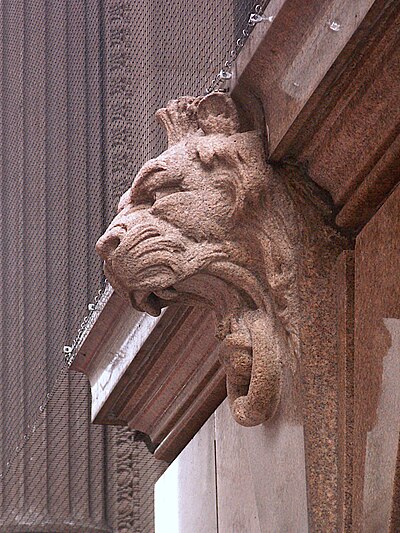
This side also has its lions.
In 1926, the bank decided to expand by building another equally magnificent hall perpendicular to the first, with an entrance on Wood Street. Osterling was the architect again—but fashions, and Osterling’s own taste, had changed.

Instead of florid Corinthian, this side is in a simpler Ionic style. The outlines are cleaner, and the wall of rectangular panes of glass and the shallow arch at the top seem almost modernistic. It is still a bravura performance, but perhaps a more perfectly controlled one.
Fortunately the whole building has been adapted as Point Park’s University Center, so it is not going anywhere, for the near future at any rate.
-
Three Flemish Houses by Frederick Osterling, Brighton Heights
-
Achille Giammartini

Purely by accident, old Pa Pitt stumbled on this portrait of the great architectural sculptor Achille Giammartini, whose work adorns churches, houses, and commercial buildings all over the city. There is almost no trace of Giammartini on the Web: in fact, search engines usually come up with no more than half a dozen results, and the first two are usually from Father Pitt. So this seems like as good a time as any to announce Father Pitt’s new project.
Bit by bit, Father Pitt is building a Pittsburgh Encyclopedia, where he will keep detailed information about architects, sculptors, neighborhoods, and such things, so that he can refer to those articles rather than repeating himself every time he publishes a new picture. Something similar has worked well with Flora Pittsburghensis and the Flora Pittsburghensis reference site.
At present the Pittsburgh Encyclopedia is just beginning: it has nine articles in total. But we have just added an article on Achille Giammartini that gathers more information about him than exists in any other single place on the Web.
-
Clyde House, Shadyside
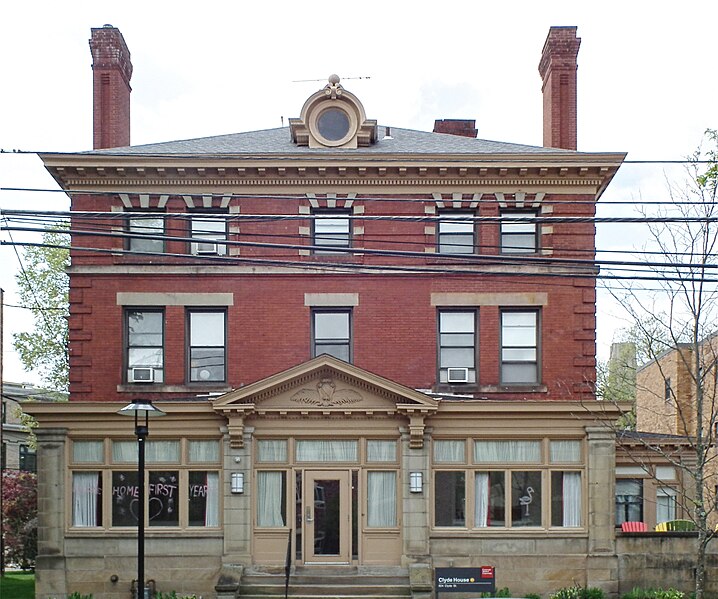
This Renaissance house in Shadyside is now a residence for first-year students at Carnegie Mellon. The round dormer is unusual, but there was a brief fad for them around the turn of the twentieth century: see also the J. J. Matthews House.
Addendum: The architect was Frederick Osterling. This is the sole survivor of a row of three houses Osterling designed; this one was for James H. Hammond. See Works of F. J. Osterling by J. Franklin Nelson, 1904.
-
Allegheny County Morgue

By a splendid exercise of bureaucratic irony, the old morgue now houses offices of the county health department. It was designed by Frederick Osterling and built—on Forbes Avenue—in 1901. In 1929, it was moved to its current location on Fourth Avenue.
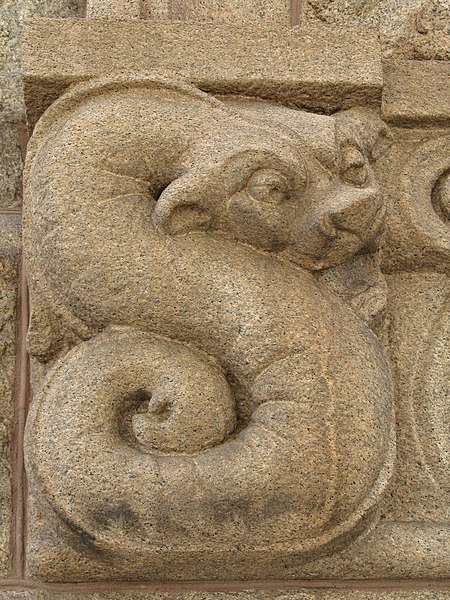
Frederick Osterling’s Romanesque buildings nearly always give us a monster or two to admire.

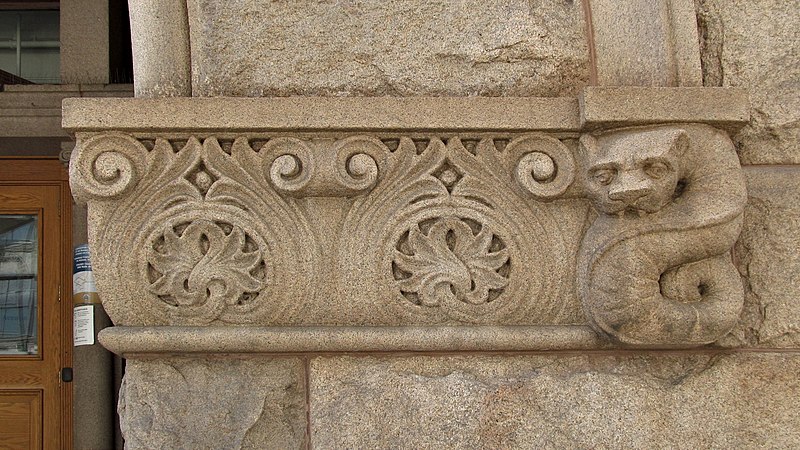
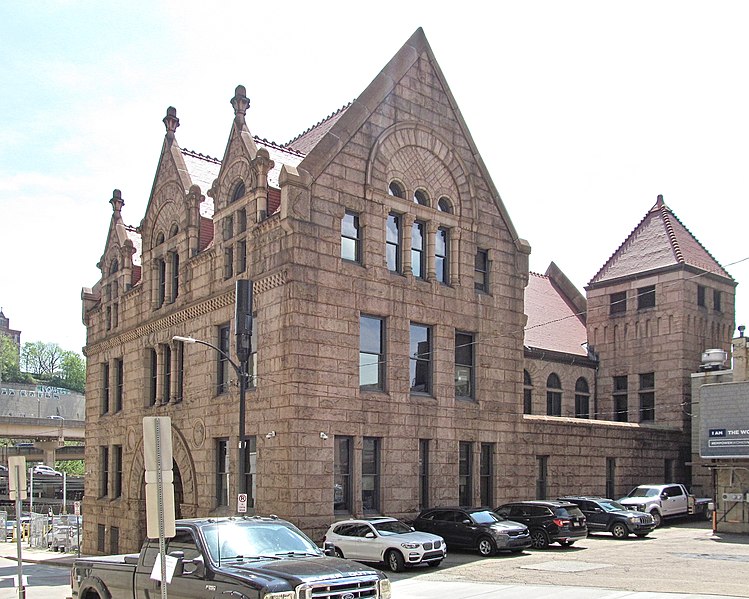
-
Top of the Arrott Building
-
Hillsdale School, Dormont

Frederick Osterling designed this school for the mushrooming borough in 1912. The building itself grew rapidly, with additions in 1914, 1916, and 1918, all in a matching style. According to the book Dormont by the Dormont Historical Society (one of the Images of America series by Arcadia Publishing), at some point in the second half of the twentieth century, high winds destroyed the original roof, and the building was given an up-to-date flat roof and a new front entrance with this fine late-Art-Deco sign.

In 1996, the school closed, and in 1999 the borough government moved in, so that this is now the William & Muriel Moreland Dormont Municipal Center. The Dormont Historical Society has a small museum here, open one day a week.

